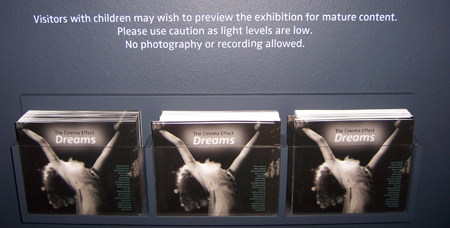No world surpasses the beauty of this our world.
Wednesday's flowers

depths of love in Immaculée Ilibagiza’s Left to Tell
Imagine a poor but close-knit village. Your family has lived there for decades and knows everyone. No one has a telephone or a television, and few have cars. In your village, everyone has similar skin color, hair color, and facial features. You are a devout Catholic, and some of your neighbors are enthusiastic Protestants. You all work together as Christians on common projects for the village.
Mataba, a village in western Rwanda, was a village like this. In 1994, three days after Easter Sunday, neighbors began massacring neighbors, chopping them up with machetes, shooting them, and burning them alive. Hutus and the Tutsis were “tribes” invented in administrative and political history and had little basis in ordinary life. Nonetheless, Hutus set out to exterminate their neighbors who were Tutsis.
Immaculée Ilibagiza, a Tutsi who grew up in Mataba, experienced this horror. Her book, Left to Tell, is a deeply moving account of human beings at their worst and at their best.
Disparately seeking a place to hide from killers, Immaculée found Janet, her best friend since primary school. Immaculée recounts:
I threw my arms around her, hugging her as tightly as I could, but her body stiffened. When I pulled back and looked into her face, it wasn’t friendly at all — in fact, her eyes refused to meet mine. …
Janet bent down, grabbed her purse, and stood up. “I don’t know what you can be thinking, Immaculée,” she said, still not looking at me. “I’m certainly not going to hide you, and neither will my father. We don’t hide Tutsis in our home.”
“But… Janet?”
She turned to the other girl and said, “I’m leaving,” and then walked out of the house and never looked back.
This was Immaculée’s “dearest friend…. We’d loved each other like sisters once.” How could a close friend’s betrayal cut more deeply than when you are in great danger of being slaughtered?
Despite the horrors it recounts, Left to Tell is in part a love story. It describes love as a divine gift. It also describes love as a capacity of a disciplined will that overcame extraordinary motivations for hate. Near the end of the book, when Immaculée is trying to rebuild her nearly extinguished life, she describes this experience:
Standing on the doorstep, weeping with joy at having found me, was my dear friend and college roommate, Sarah. She’d managed to track me down, and we both screamed and threw our arms around each other. We spent hours catching up and shedding many tears. My heart broke all over again when I told her how the pastor had sent our brothers Augustine and Vianney out into the night — and how they died together. …
“You will always have a family with us,” Sarah said. “Come live at my house … we’ll be sisters again!”
That is a miracle of love for Immaculée and by Immaculée.
Immaculée’s father, Leonard Ukulikiyinkindi, and her mother, Marie Rose Kankindi, were hard-working parents who clearly loved each other and their children greatly. Not only that, they loved their neighbors, with love expressed in acts like tutoring children, sewing a neighbor’s wedding dress, counseling others, and building up the local Catholic schools. When the massacres started, a huge crowd gathered at their house. Leonard climbed on top of a rock and addressed the crowd:
“I know you’re afraid; don’t be. These people — these killers — are few, and we are many. They’re not stronger than we are, not if we have God’s love in our hearts. If they are acting out of evil, if they come to harm us for no reason other than their hatred for us, then we will defeat them. Love will always conquer hatred. Believe in yourselves, believe in each other, and believe in God!”
Both Leonard and Rose were brutally killed.
After the massacres ended, Immaculée met a man who had helped to kill her mother and her brother, and who had sought to kill her. Called Felicien, he was “a successful Hutu businessman whose children I’d played with in primary school.” He became a vicious killer, and then a broken, shamed prisoner. Meeting him in prison, Immaculée recounts:
I wept at the sight of his suffering. Felicien had let the devil enter his heart, and the evil had ruined his life like a cancer in his soul. …
Felicien was sobbing. I could feel his shame. He looked up at me for only a moment, but our eyes met. I reached out, touched his hands lightly, and quietly said what I’d come to say.
“I forgive you.”
Love conquered hatred.
To understand the fullness of life, in its astonishing extremities, read Immaculée Ilibagiza’s luminous book, Left to Tell.
unbearable banality of suppressive art exhibits

The cinema was the unrivaled art form of the twentieth century. Film, as well as later incarnations like television and the internet, has penetrated to the culture’s core so that the very boundaries between “real life” and make-believe have become at least blurred, if not indecipherable.
No photography or recording allowed.
Today, the cinema is everywhere — it is in the way we perceive our world, in the way we speak, in the way we dream. We have no need of entering a movie theater to experience cinema; life itself is just like a movie.
No photography or recording allowed.
The exhibition brochure includes a quote from Stephen Fry’s book, Making History. Here is the quote, with a minor substitution:
When you walk along the street, you’re in a little bottle of oil; when you have a row, you’re in a little bottle of oil….When you skim stones over the water, buy a newspaper, park your car, line up in a McDonald’s, stand on a rooftop looking down, meet a friend, joke in the pub, wake suddenly in the night or fall asleep dead drunk, you’re in a little bottle of oil.
Decide what to do next weekend. Whatever you decide to do, and even if you don’t decide to do anything, that weekend will be over soon.
Wednesday's flowers
